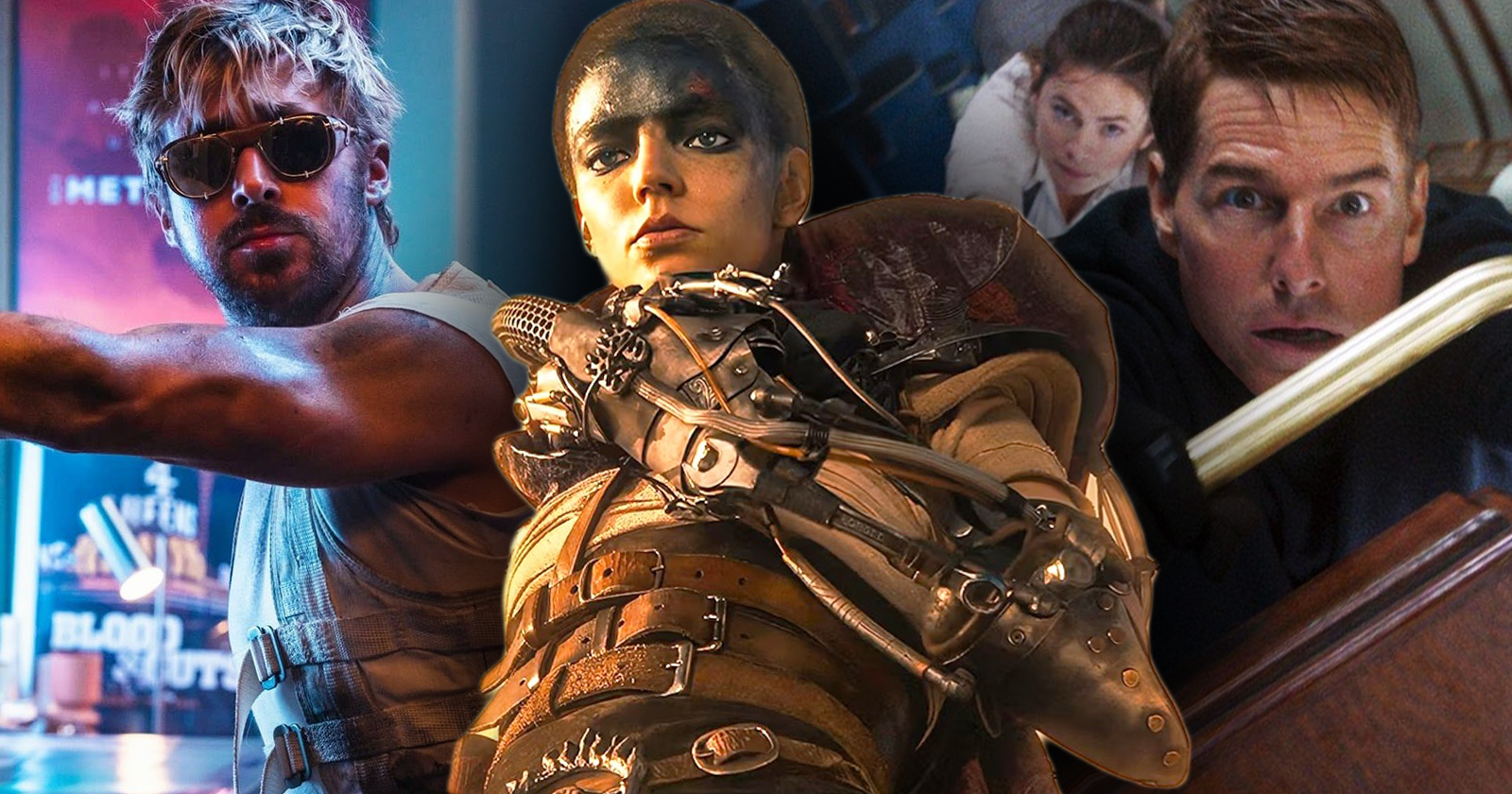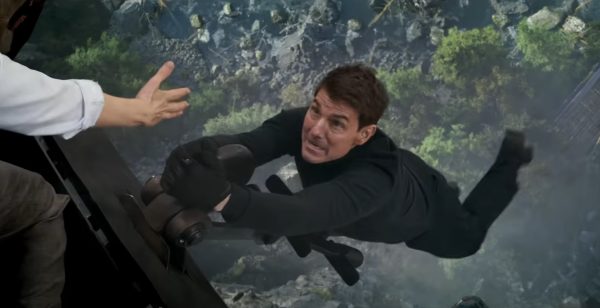After some notable big-budget bombs, is the big screen experience on its last legs?
Remember Barbenheimer? It felt like a shot of adrenaline that could reinvigorate a struggling big screen industry with audiences preferring to catch films on streaming. Had you been asked about your expectations for the success of a three-hour biopic of Oppenheimer and a candy-coloured adaptation of an iconic Mattel toy, you might have fancied success for the toy movie at least, but nothing like it being the runaway box office hit of the year. You certainly wouldn’t have bet your mortgage on the kind of coin Oppenheimer made.
Cinema is unpredictable and the recent box office drudgery connected to Marvel movies and Star Wars movies, once bulletproof money spinners has left analysts, studios, producers and filmmakers bewildered at how to navigate the industry. Second-guessing what an audience wants has always been tough but now it seems tougher than ever with generations seeing wider splits in tastes and attitudes. There’s a sense now that when it comes to big tentpole pictures, nothing since Barbenheimer has performed up to the studio’s expectations.
Just prior to Barbie and Bobby Opp, Tom Cruise put out his latest Mission: Impossible, following on from the runaway success of Fallout and Top Gun: Maverick. Now, had he not released it a week before the cinematic double bill of the century, it may have done better, but there was still a sense that Dead Reckoning was a little tired, leaving the audience a little bit Cruise fatigued and perhaps a little bit weary of Ethan Hunt. The fact the film was also a part one, brought the inevitable sense of an unresolved ending which may have left some audiences reluctant.
Generally, Cruise as Hunt has been a money spinner from the fourth film onward in the long-running franchise. The fact his big franchise movie underperformed won’t fill studios with much optimism. The appeal of movie stars has waned in favour of the lure of IP characters too. A star like Cruise is more likely to lead a big-budget tentpole film to success if he’s in a franchise film or a sequel to an iconic film, but outside of that? It’s probably going to bomb. This was exactly the fate which befell Ryan Gosling’s latest blockbuster.
Starring in The Fall Guy doesn’t bring with it the same iconic IP backing he got playing a Ken doll in Barbie. Fans of the original show are at an age where a kind of wry winky throwback with a modern-era star, was never going to appeal. To prospective new fans, the concept of The Fall Guy is more niche appeal than mainstream too. It’s the kind of appeal more suited to a $50 million budget movie rather than $130 million dollars. The box office power of Gosling and Emily Blunt as a pairing was woefully misjudged unfortunately and despite excellent reviews from critics and the three people who saw it on the big screen, there was just no wide audience there waiting to see it.
Sure, that’s a miscalculation on a film that was never going to be surefire but it does suggest that despite the power of celebrity, movie star power doesn’t have the same lure as it did up to around 15 years ago. More surprising has been the latest flop du jour, with Furiosa: A Mad Max Saga arriving on screens with great reviews and following on from arguably the best action film of the past decade. The previous film, Mad Max: Fury Road, didn’t necessarily have a box office star on the roster, with Miller opting for the enigmatic method acting of Tom Hardy (more character artist than money magnet) and Charlize Theron.

Fury Road’s success (although the box office was so-so in truth) was based largely on great trailers, even better word of mouth and a dearth of decent competition that year. 9 years since its release is a long old time though and it feels like we’re in a new generational cycle with different tastes. Anya Taylor-Joy might be one of the most popular stars at the moment, built off of streaming success and substantial parts in ensemble features. As a headliner, she’s been found wanting it seems but at a time when almost every actor is unable to attract a wide audience by their star power alone.
Even the most pessimistic analyst would have struggled to predict just how dire Furiosa’s box office was and not even the presence of MCU stalwart, Thor (Chris Hemsworth) could entice people to the big screen. If one answer is to make good movies, it seems that the audience has also closed the door on that method because, despite critical acclaim, The Fall Guy and Furiosa have both failed. Maybe the audience wants a huge scale spectacle. Unfortunately, both those films delivered spectacle in spades. Dune: Part Two did the same to better but still middling results. It seems odd to call a $711 million dollar grossing movie middling but at the combined cost of budget, extensive marketing and popcorn bucket flesh-lights, the film really needed to be crossing the billion dollar mark to be close to considered a runaway hit.

Here in lies the problem with mega-budget films. If you make something for $250 million and spend a further $100 million on plugging and putting your film out there, then you’ve got to be hitting the billion mark as a minimum to be deemed a success. Short of a few anomalies or films that capture the zeitgeist (like Avatar: The Way of Water), nothing seems to be reaching that and where Disney used to piss billion-dollar movies out like the spray of a fireman’s hose, they’re now puffing dust from the purple cyclops. Even some films of undoubted successes like the Avatar sequel have been and gone and are now all but forgotten, such is the disposable nature of most modern popcorn specials.
It feels like we’re at a turning point where Studios need to wake the hell up and change the industry in similar ways to the golden era of American cinema from the late 60s up to Star Wars when the blockbuster slowly began taking over. An end to overblown opuses and spectacle saw a rise in indie films, niche audience films and gritty filmmakers making thoughtful and challenging cinema. Even if the big studios were making films, they’d often be making them on smaller scales and allowing aspiring voices to have creative freedom. Audiences responded, and whilst that cycle, with an onus on pessimistic cinema, did end (with the rise of escapist cinema), it still reinvigorated a troubled industry and challenged audiences in a way they felt they hadn’t been before.
Likewise, it’s not to say big spectacle and event movies can’t still be made on smaller budgets and this was proven with aplomb with Godzilla Minus One. Do some studios care if a huge-budget film flops? They raise huge amounts and for the most part, none of these films look like the money has all ended up on screen. Pockets get filled and audiences endure dreadful CGI on bloated 2.5-hour runtimes. With the overwhelming majority of mega-budget films bombing, but still being made, it feels like there’s either an apathy or some fiendish accounting going on.
The comparative success of horror does bode well though. A recent boom and several successful films show that making smaller-scale films (and particularly making them well) and targeting your niche audience is less of a gamble and offers potentially solid returns. A24 has also been successful enough to turn from indie darlings to becoming a kind of hipster’s preferred mainstream studio. We need more studios of the same ilk and more aspiring indie filmmakers given the chance to put their films on the big screen.

One of the great frustrations as a cinemagoer is how limited many indie releases are. I saw an ad on Facebook from a cinema chain plugging Civil War. Almost every comment was bemoaning the fact the film being plugged on a targeted ad wasn’t actually showing at their local cinema (of said chain). A few years back with a lot of buzz, Nic Cage’s Mandy was greeted with huge festival acclaim and great word of mouth, only to be consigned to very limited showings in the US and UK (but generally high per theater averages). So why not give it more screens, targeting regions likely to have a strong horror showing? There were very dull legal reasons why Mandy didn’t get a wider release, but the kind that shouldn’t be hampering a film with an audience in wait.
If I ever get to catch an indie sleeper or a world cinema hit, I usually have to travel out to a boutique cinema and see it on a smaller screen. The turnouts are usually decent too because there is an audience who wants to see the different cinema offered around the world or be challenged by an indie filmmaker crafting something as cerebral and powerful as Aftersun (for example). These films deserve to get multiplex slots usually reserved for all-but-empty showings of bloated and vapid blockbusters that most people aren’t watching anyway.
Furthermore, retrospective screens do seem to bring reasonable numbers in their one off showings. I’ve seen Commando, Blade Runner and Predator this year and those probably had better turnouts compared to the contemporary mainstream films I’ve seen this year. A few years back I sat watching Rambo: Last Blood at a peak time on opening night on a large theatre screen with three people (myself included). What was the point of putting it out? A film like that of course didn’t need Nostradamus to predict a dreadful return given a dreadfully rusty franchise and the aging Stallone’s fading star power (along with franchise worst reviews).
There’s no simple answer but a move to focus on smaller audience pockets with smaller budgets might be a start. It may just be that audiences aren’t merely losing their love of big screen outings, or even in a cost of living crisis (which certainly doesn’t help), but that the range of films on offer at those multiplexes feel drearily (and misguidedly) aimed at a ‘wide audience’ or purely at the under 25s.

Those Gen Z’ers do occasionally get unfairly dismissed for having no attention span, but there’s a subset of young passionate cinephiles actively seeking to be challenged by interesting, quirky or bizarre cinema, to the point they (bless ’em) thought Saltburn was out there. I mean for a mainstream watercooler flick, Barry Keoghan humping a freshly dug grave or slurping a Jacob Elordi milkshake from a plughole might be weird shit, but I studied film in the early 00s and had to watch Salo bruh. Kids, you need to watch John Waters, that’s all I’m saying.
Hollywood, you can still make escapist films for kids at sensible budgets, but maybe start putting out $5-15 million budget films aimed at cinephiles of different generations? They will pay attention. While we’re at it, for all that is holy, unless you’re film is impeccably tight and razor-sharply edited (from script to screen) then STOP making such long (looooong) films. I can’t be the only person who misses concise sub-2 hour movies?
Right now, unless a drastic revolution is taken, as opposed to half-hearted evolution, the big screen experience is under threat of being irreparably damaged – and maybe even taken into a quiet wood to get a bullet to the head. Does the big screen still hold any magic to you? Let us know on our social channels @FlickeringMyth or hit me up on Instagram @JolliffeProductions…
Tom Jolliffe














